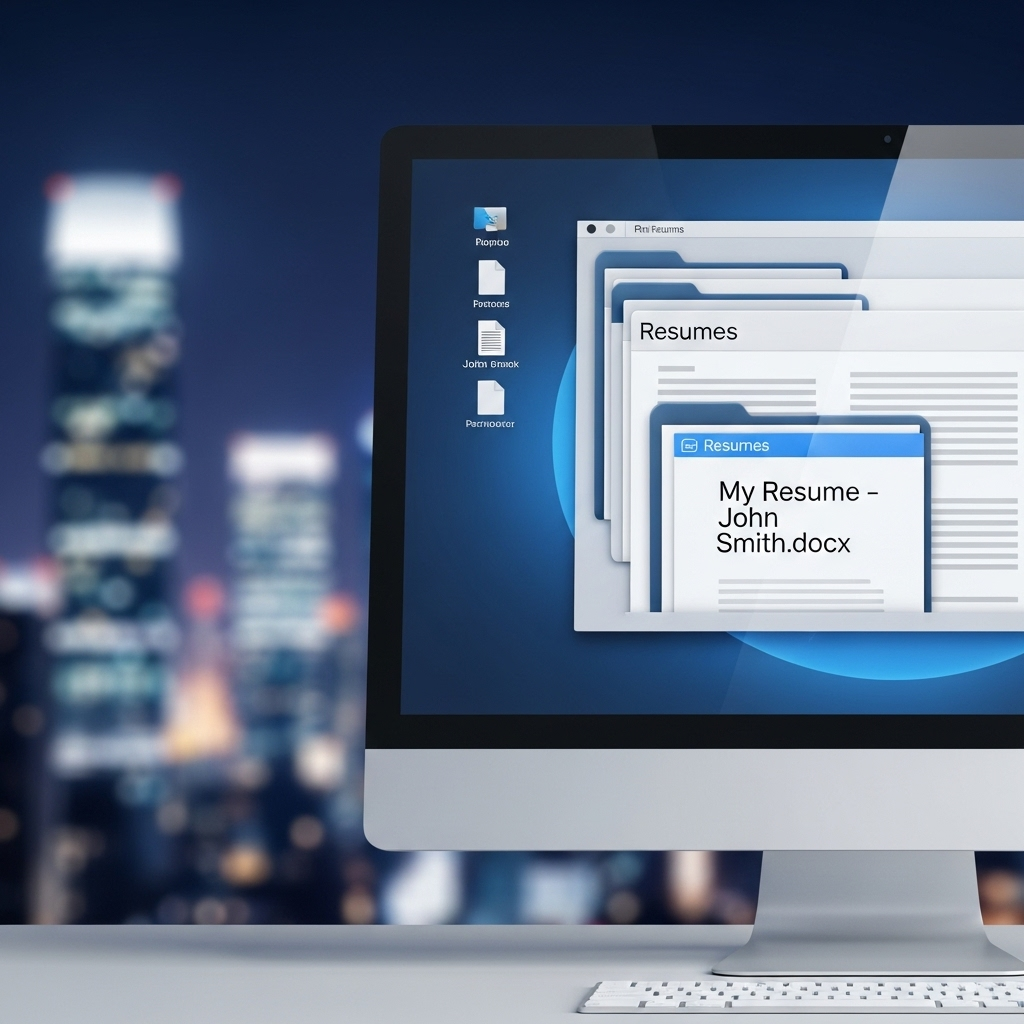How to Name a Resume File: The Ultimate Guide for 2025

Introduction
You've spent hours crafting the perfect resume. You've meticulously detailed your skills, quantified your achievements, and chosen a professional font. But just as you're about to hit "send," you're faced with a seemingly small but surprisingly crucial question: how to name a resume file?
It might seem like a trivial detail, but the name of your resume file is the first piece of information a recruiter or hiring manager sees. A poorly named file can make you look unprofessional, disorganized, or even get your resume lost in a sea of applications.
The internet is full of advice on this topic, but much of it is outdated or incomplete. This guide is different. We'll not only cover the basics but also delve into the nuances of resume file naming, providing you with a comprehensive, step-by-step process to ensure your resume gets the attention it deserves.
Why Your Resume File Name Matters More Than You Think
Before we dive into the "how," let's talk about the "why." Understanding the importance of a well-named resume file will motivate you to get it right every time.
- Professionalism: A clear, professional file name is a reflection of your personal brand. It shows that you're detail-oriented and take the application process seriously.
- Applicant Tracking Systems (ATS): Many companies use ATS to filter and sort resumes. A properly named file with your name and relevant keywords can improve your chances of getting past the initial screening. Understanding the true meaning of ATS resume optimization is crucial for modern job seekers.
- Recruiter Organization: Recruiters handle hundreds, sometimes thousands, of applications. A file name that includes your name and the position you're applying for makes their job easier, and a happy recruiter is more likely to view your application favorably.
How to Name a Resume File: The Formula for Success
Forget the guesswork. Here's a simple, effective formula for naming your resume file:
[Your Name] - [Job Title] - Resume.[File Extension]
Let's break down each component:
- Your Name: Always start with your first and last name. This is the most important piece of information for recruiters.
- Job Title: Include the title of the position you're applying for. This helps recruiters quickly identify which role you're interested in.
- Resume: Adding the word "Resume" makes it crystal clear what the document is.
- File Extension: Always save your resume as a PDF to preserve formatting.
Examples of Good Resume File Names:
John-Doe-Software-Engineer-Resume.pdfJane-Smith-Marketing-Manager-Resume.pdfDavid-Chen-Project-Manager-Resume.pdf
Examples of Bad Resume File Names:
resume.pdf(Too generic)John_Doe_Resume_v3_final.pdf(Unprofessional versioning)MyResumeForGoogle.docx(Wrong file type and unprofessional phrasing)
Do's and Don'ts of Resume File Naming
To make it even clearer, here's a handy table summarizing the key do's and don'ts:
| Do | Don't |
|---|---|
| Include your full name. | Use generic names like "resume.pdf". |
| Use hyphens or underscores to separate words. | Use spaces, which can cause issues with some systems. |
| Tailor the file name to the specific job. | Use the same file name for every application. |
| Save your resume as a PDF. | Use other file formats like .docx or .txt unless specified. |
| Follow ATS formatting best practices. | Use fancy formatting that confuses ATS systems. |
| Keep it concise and easy to read. | Include version numbers or other unnecessary information. |
Step-by-Step Guide to Naming Your Resume File
Ready to put this into practice? Here's a simple, 3-step process:
- Finalize Your Resume: Before you even think about the file name, make sure your resume is 100% complete, proofread, and ready to go.
- Choose the Right Format: Click "Save As" and select "PDF" from the dropdown menu.
- Apply the Formula: Use the formula we discussed above:
[Your Name]-[Job Title]-Resume.pdf.
"The name of your resume file is your digital handshake. Make it a firm one." - Forbes
The JobSeekerTools Advantage
Tired of manually tailoring your resume for every application? JobSeekerTools can help. Our resume builder and job match scanner make it easy to create and customize your resume for each specific role. Plus, our tool automatically suggests professional file names, so you can be confident that you're always putting your best foot forward.
Conclusion
Naming your resume file might seem like a small detail, but it can have a big impact on your job search. By following the simple guidelines in this article, you can create a professional, effective file name that will help you stand out from the competition and get one step closer to landing your dream job.
Frequently Asked Questions
Should I include the date in my resume file name?
It's generally not necessary to include the date in your resume file name. Your resume should be tailored to the specific job you're applying for, so the date is less important than your name and the job title.
What if the job application has specific instructions for the file name?
Always follow the instructions in the job application. If they ask for a specific format, use that format, even if it differs from the advice in this article.
Is it okay to use underscores instead of hyphens?
Yes, underscores are also acceptable. The most important thing is to be consistent and to avoid using spaces. For example, John_Doe_Software_Engineer_Resume.pdf is also a good option.